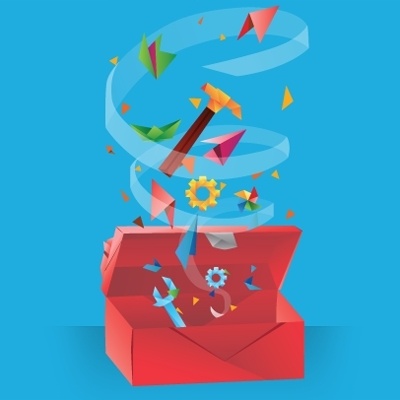Before And After Training: Why They Matter When Designing More Effective Learning Solutions
Robert Brinkerhoff’s Courageous Training Model (shown below) provides a framework for creating learning solutions with high transfer.
- Before Training 40%
Create motivation, focus, alignment, and intentionality:- Purpose/goal of the training.
- Preparation of case, reflection assignment, article, interview with colleague/client.
- Mobilization of managers and including them in the design phase through impact map/learning contracts.
- During Training 20%
Provide quality learning interventions and tools:- Incorporation of adult learning practices into the design of the workshop.
- Skills focus - feedback.
- Case-specific training.
- Design of training for easy transfer.
- After Training 40%
Support performance improvement and implementation:- Follow-up and home assignments, participate in a colleague meeting, supervision, and feedback, learning groups, systems to capture and share learning.
- Review of impact map/learning contract with Manager.
The trainer should be the 'conductor' controlling the entire process before, during, and after the training program and getting all stakeholders to interact in perfect harmony.
To architect effective solutions that achieve knowledge transfer, we can’t focus on knowledge delivery alone. We need a more robust model.
Ready To Make A Shift?
Today, most organizations view design as an aesthetic. Too many learning designers only think about how to get the content into people’s heads. They focus on what a solution will look like and the bells and whistles that they think will “engage” the user. While these elements certainly create an enjoyable experience and may add to the credibility of the content itself, it’s important to think about design in broader terms.
Let’s start by defining the future state we want to achieve and then consider all of the points of engagement and their purpose that are required to get there. This means shifting our focus from the “content” we want to get into people’s heads to understanding the gap between current state and future state. From there we can then design a broader experience to support the change journey on which, we’d like to lead the individual.
What Does A Change Journey Look Like?
At Kineo, we’ve been expanding our idea of design from the learning event to creating a broader view of designing a more complete change journey. Our journey idea takes a step back from design and takes a more holistic approach that pulls in the before, during, and after. It’s a framework for design.
This idea of a change journey may sound mystical, but we’ve all been through them. Remember when you learned to drive? It was a process – a journey, in fact.
It started with your excitement about getting your driver’s permit, and it carried you through a number of steps until you proved your proficiency on the road with an examiner and finally got to take a horrible picture to be printed on that coveted license. We have laid out a six-step process for a change journey: Engage, diagnose, learn, apply, assess, reinforce.
Let’s break the journey down to better understand what was really involved. (It looks a lot easier than it really is!)
1. Engage
Motivation probably wasn't a big issue for you. You had friends or older siblings who were already driving, and you were ready to go. (You had high intrinsic motivation, unlike many compliance training courses!)
2. Diagnose
Watching your parents drive while they were throwing snacks to the kids in the back seat and drinking a cup of coffee sure made driving look easy. But after that first time behind the wheel in a parking lot when the car seemed to have mind of it's own, you quickly realized this was going to be harder than it looked and that your skills needed some work.
3. Learn
You attended Driver's Ed, where you watched videos, read rules of the road, talked through different scenarios, and occasionally got behind the wheel.
4. Apply
You then spent countless hours behind the wheel – probably with a parent or driver's instructor – and refined your skills. And you probably made more than a handful of mistakes along the way until you felt confident enough to head over to the DMV and take your road test.
5. Assess
At the DMV, you took a formal assessment of your knowledge and demonstrated your driving skills.
6. Reinforce
Now every three years you go back and at a minimum, take a written exam, and you may not want to admit it – you need to brush up on your skills to get ready.
Final Word
In the case of learning how to drive, you most likely developed your skills through a series of learning and knowledge activities, along with a heavy dose of structured practice and application. For learning how to drive, you went through all 6 of those steps. It turns out this journey applies to most of the learning journeys we’ve been on in our lives and can be applied to workplace learning just as well.
In our next article we will explore how exactly to craft this learning journey in order to architect an overall learning solution. Stay tuned!
Related Articles:
- Free eBook: Designing For Results – A Framework For Designing More Effective Learning Solutions
- Designing More Effective Learning Solutions (Part 2): Crafting Your Journey








